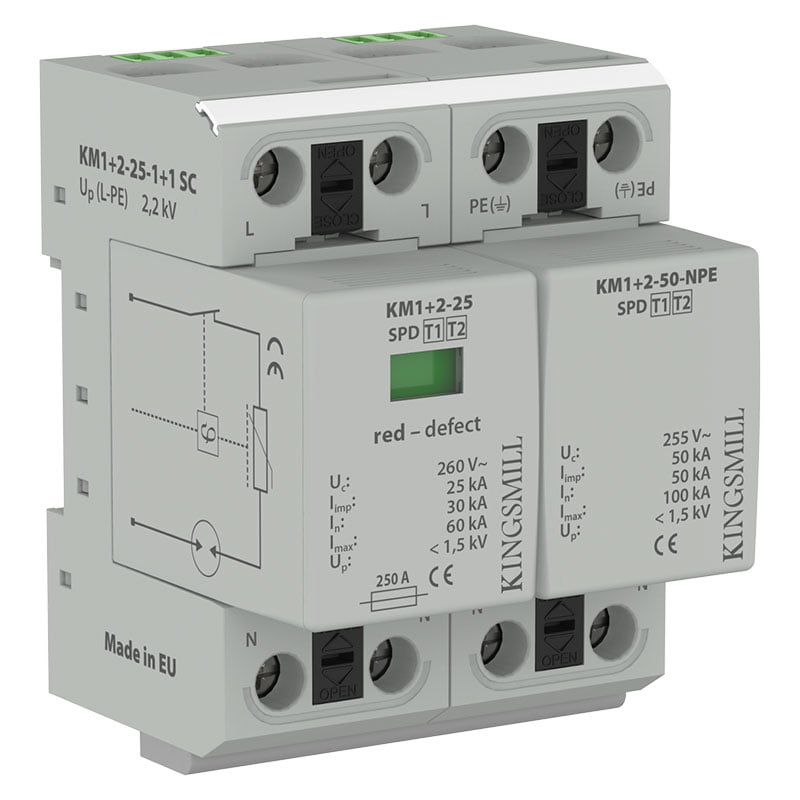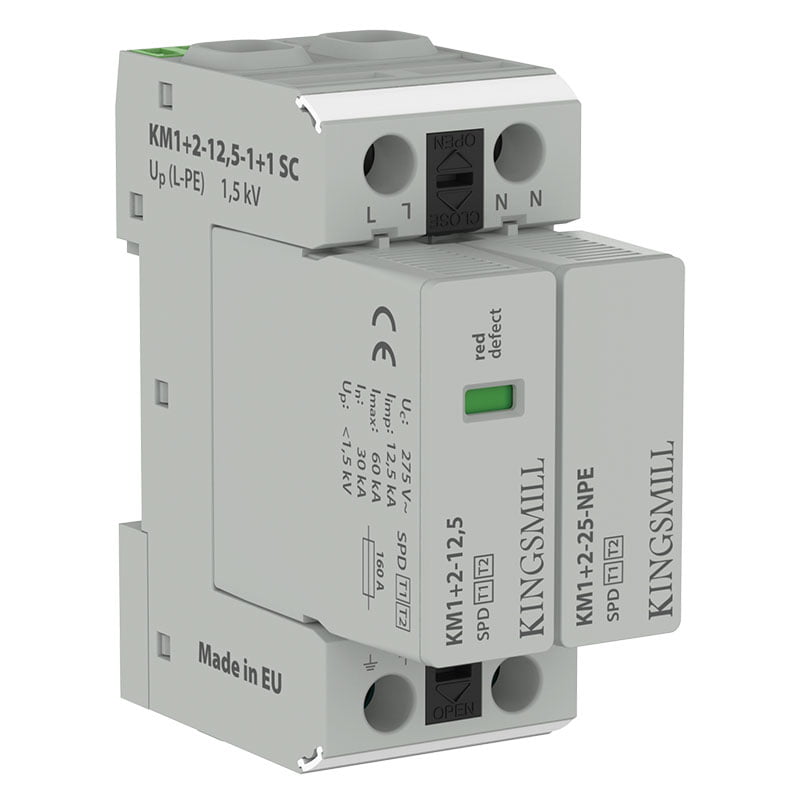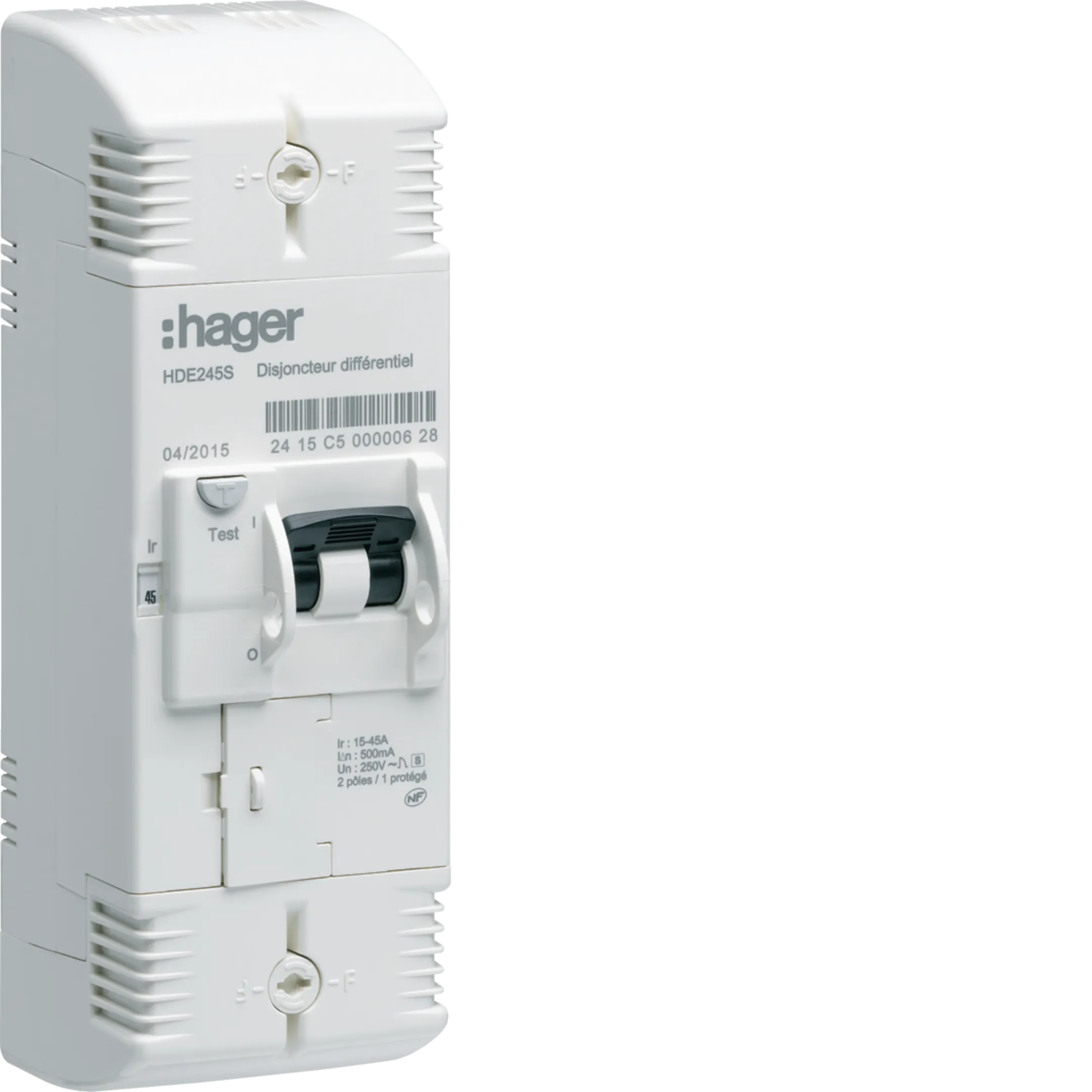Hi all,
Grateful for your expertise regarding my confusion on the below.
Context:
Plan to fit a new consumer unit with all circuits protected by 30mA type A or type AC RCDs
Would like to fit a surge protection device Type 2 (it is on the border of one of the departments where a "parafoudre" is mandatory for lightning protection)
Most of the French guidance on installation of SPDs suggests fitting at the bottom of the consumer unit, directly downstream of the main RCBO (and therefore in parallel with the rest of the RCD protected final circuits). It seems that it is now standard for supply-side RCBOs are Type S, but this one is not.
"Regulation 534.4.7 states that an SPD installed on the load side of the RCD is required to have a surge current immunity of at least 3 kA.
RCD standards include two levels of immunity to surge currents.
1. A General type RCD with a minimum surge current immunity of 200 A with a 0.5 µs/100 kHz waveform (Various Types)
2. A time delayed S type RCD with a minimum surge current immunity of 3000 A with an 8/20 µs waveform
Therefore, an SPD should not be installed on the load side of a G type RCD, this is to prevent unwanted operation of the RCD due to surge current."
Aside from the beneficial selectivity (discrimination) of having a Type S with the in-series RCDs of the final circuits, what is the relevance/importance of Type S in use with SPD? Presumably if the supply-side RCBO is not surge current immune as above, then it would trip during a surge and somewhat inhibit the ability of the SPD to pass to earth (though I imagine with a surge large enough it would arc across the switch).
Finally, the current supply-side RCBO has the symbol discussed here:

 www.electriciansforums.net
The final comment suggests that a general type RCD with the symbol would: "... will resist surges 8/20μs up to 250A"
www.electriciansforums.net
The final comment suggests that a general type RCD with the symbol would: "... will resist surges 8/20μs up to 250A"
Can anyone shed any more light on this symbol, and whether perhaps the current supply-side RCBO is in fact immune to surge currents mentioned above?
I will be applying to ERDF for the supply-side RCBO to be upgraded to a Type S for selectivity, but in the interim, I'd be grateful for your thoughts on the relevance of a non-selective RCD upstream of an SPD.
Many thanks!
Grateful for your expertise regarding my confusion on the below.
Context:
- French rural domestic property
- Single phase supply, TT earthing
- Supplier side RCBO (standard in France, usually next to the meter) - "disjoncteur de branchement" - 500mA, single pole protection, unspecified type
- This supply-side RCBO is actually inside the property, whilst the meter is in the box outside (other side of wall)
- The current install is probably original and from the 1990s
Plan to fit a new consumer unit with all circuits protected by 30mA type A or type AC RCDs
Would like to fit a surge protection device Type 2 (it is on the border of one of the departments where a "parafoudre" is mandatory for lightning protection)
Most of the French guidance on installation of SPDs suggests fitting at the bottom of the consumer unit, directly downstream of the main RCBO (and therefore in parallel with the rest of the RCD protected final circuits). It seems that it is now standard for supply-side RCBOs are Type S, but this one is not.
"Regulation 534.4.7 states that an SPD installed on the load side of the RCD is required to have a surge current immunity of at least 3 kA.
RCD standards include two levels of immunity to surge currents.
1. A General type RCD with a minimum surge current immunity of 200 A with a 0.5 µs/100 kHz waveform (Various Types)
2. A time delayed S type RCD with a minimum surge current immunity of 3000 A with an 8/20 µs waveform
Therefore, an SPD should not be installed on the load side of a G type RCD, this is to prevent unwanted operation of the RCD due to surge current."
Aside from the beneficial selectivity (discrimination) of having a Type S with the in-series RCDs of the final circuits, what is the relevance/importance of Type S in use with SPD? Presumably if the supply-side RCBO is not surge current immune as above, then it would trip during a surge and somewhat inhibit the ability of the SPD to pass to earth (though I imagine with a surge large enough it would arc across the switch).
Finally, the current supply-side RCBO has the symbol discussed here:
Anyone know this RCD symbol?
Hi guys, I know the AC symbol but the one to the right i've not seen before or just not noticed it. Anyone know?
Can anyone shed any more light on this symbol, and whether perhaps the current supply-side RCBO is in fact immune to surge currents mentioned above?
I will be applying to ERDF for the supply-side RCBO to be upgraded to a Type S for selectivity, but in the interim, I'd be grateful for your thoughts on the relevance of a non-selective RCD upstream of an SPD.
Many thanks!












